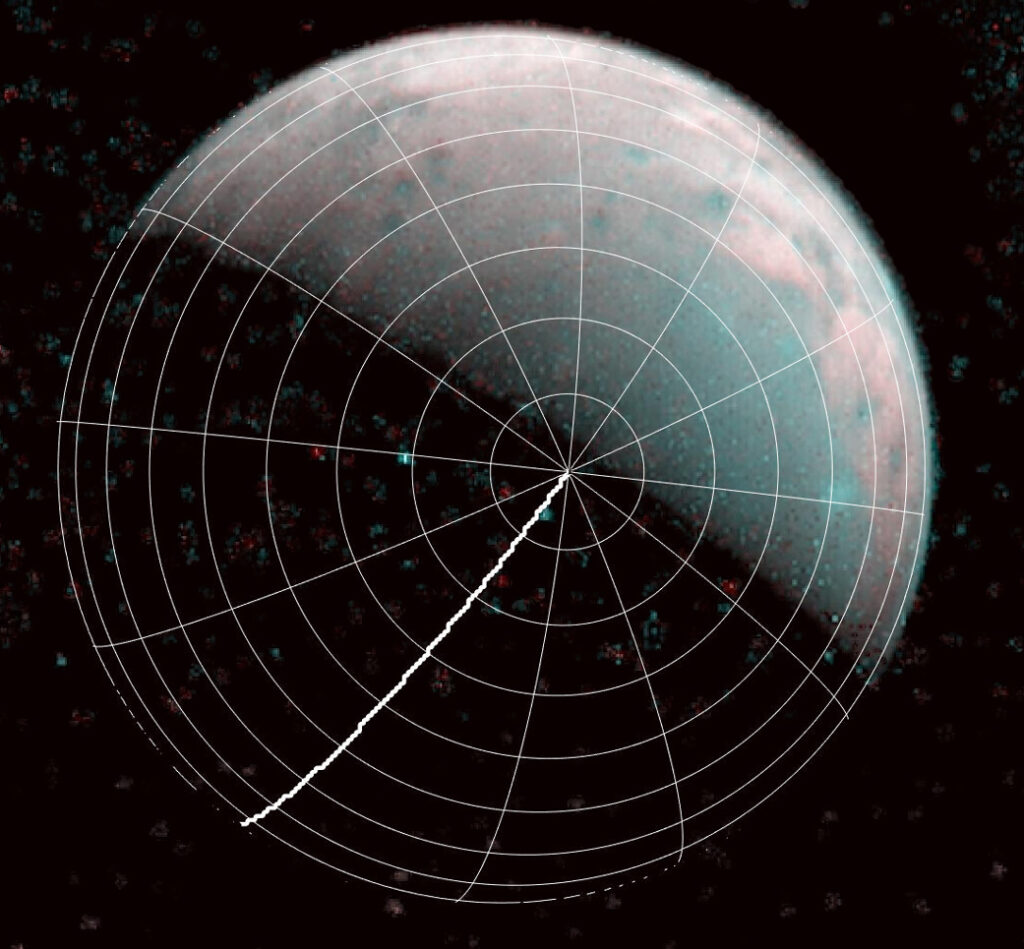Extraordinary views of the largest moon in the solar system, Ganymede, were captured by NASA’s Juno Jupiter probe. This data provides the first infrared mapping of the massive moon’s northern frontier and could help to understand the evolution of the Jovian moons.

The moon has long attracted astronomers since Galileo discovered it in 1610. While he didn’t have many of the tools needed to examine it at his disposal, now NASA does. The Juno Jupiter probe captured infrared imagery, using the Jovian Infrared Auroral Mapper (JIRAM) instrument.
While JIRAM was initially designed to capture the infrared light emerging from deep inside Jupiter, thus probing its ‘weather layer’, it can also be used to study the moons. This includes Europa, Ganymede, and Callisto, collectively known as the Galilean moons for their discoverer.
“The JIRAM data shows the ice at and surrounding Ganymede’s north pole has been modified by the precipitation of plasma,” said Alessandro Mura, a Juno co-investigator, in a press release. “It is a phenomenon that we have been able to learn about for the first time with Juno because we are able to see the north pole in its entirety.”
Ganymede, which is larger than Mercury and Pluto, consists mainly of water ice and is the only moon in the solar system with its own magnetic field. On Earth, the magnetic field allows plasma to enter the atmosphere and create auroras. But Ganymede has no atmosphere so its surface receives plasma from Jupiter’s magnetosphere. The plasma stops the ice in Ganymede’s poles from turning into the structures we see on Earth.
On Earth, water forms a crystalline structure after it freezes, with layers upon layers of water molecules forming a lattice of hexagonal rings. But this doesn’t happen on Ganymede, where the ice has an amorphous form.
Analyzing and understanding these structures will help to understand the formation of Jupiter’s moons and the forces that shaped them. The European Space Agency also plans to explore the moon with the spacecraft JUICE (Jupiter Icy Mons Explore) which will be launched in 2022.

The European spacecraft will reach Jupiter by 2029 and should start performing close-up science at Ganymede around 2032. NASA’s plans are also set to continue, exploring another Jupiter moon around the same time with the assistance of Europa Clipper.
The Juno spacecraft entered the orbit of Jupiter 2016 with the main goal of revealing the story of Jupiter’s formation and evolution. Juno will use diverse technologies on a spinning spacecraft placed in an elliptical polar orbit to analyze Jupiter’s gravity and magnetic fields, atmospheric dynamics and composition, as well as its evolution.









